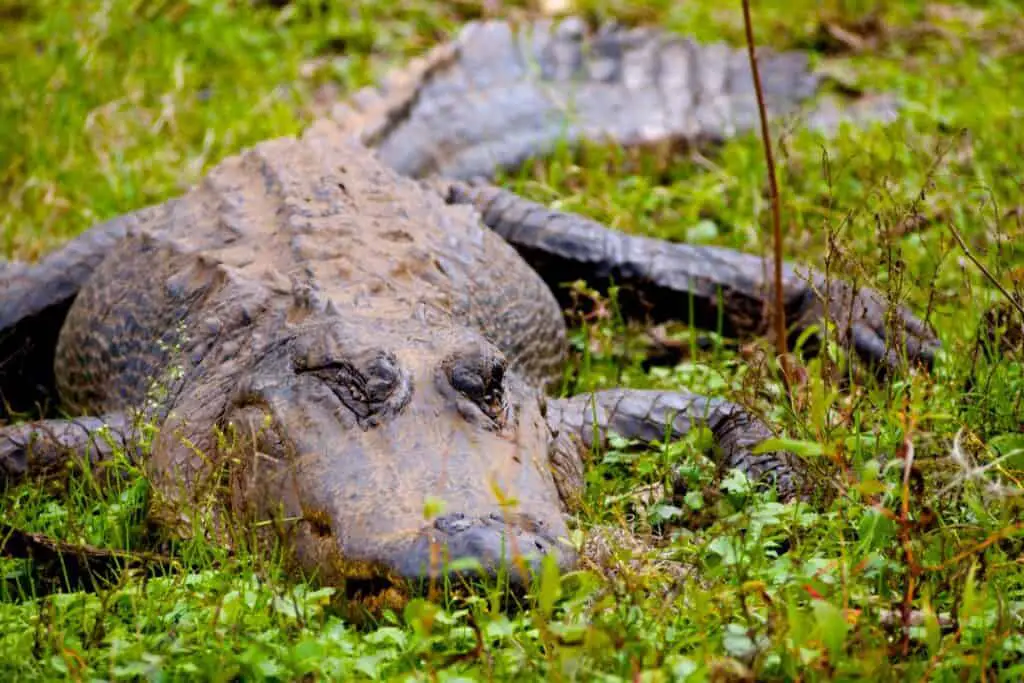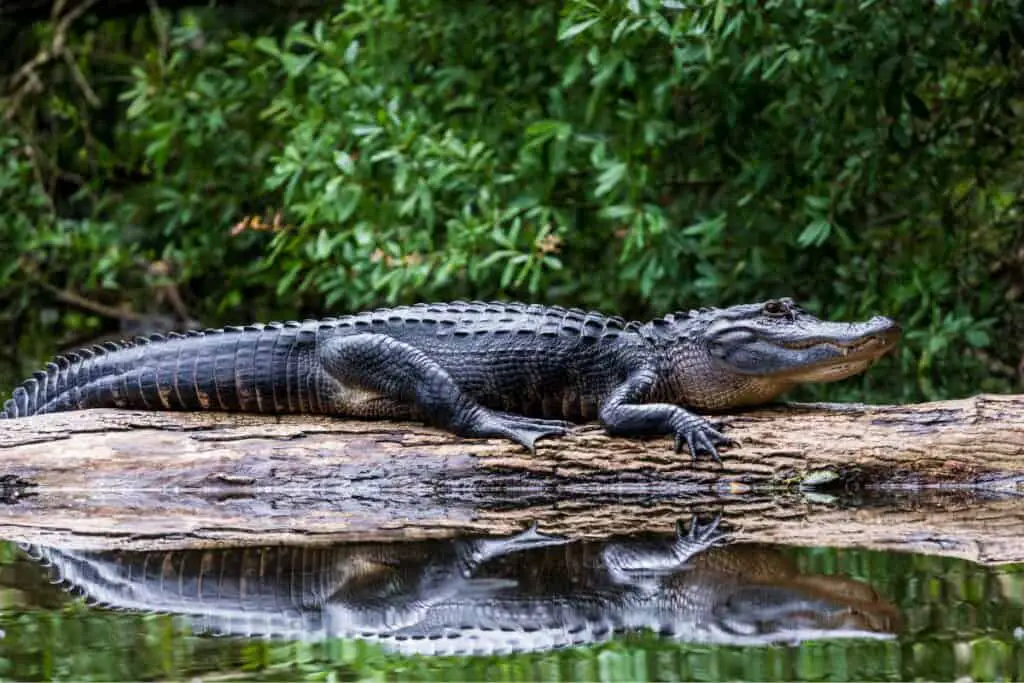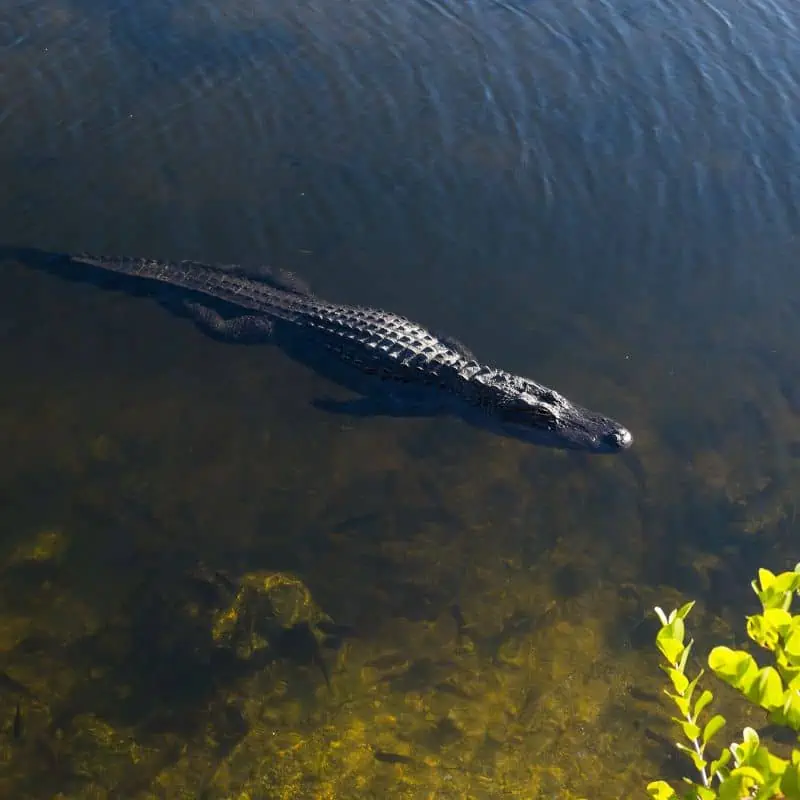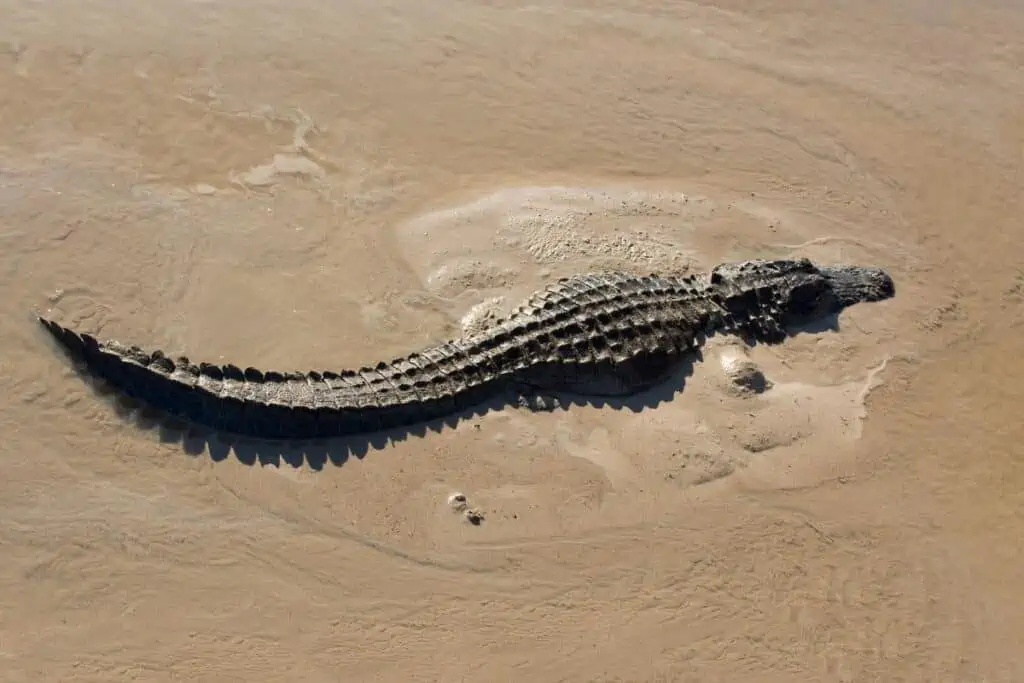Alligators can be found in more than just Florida, and even in some colder places. How do they survive these colder places, though? Do alligators hibernate?
Alligators do not hibernate, but they go into brumation. Brumation is a lot like hibernation. When animals hibernate, they fall into a deep sleep without eating or moving for extended periods. Brumation is when alligators don’t fall into a deep sleep but are not active except for drinking water.
Scientists have studied the lifecycle of alligators for years, and experts have discovered a lot about their sleeping habits.
Let’s look at how alligators survive cold periods.

Do Alligators Hibernate?
We have all seen alligators floating on the water, looking like they are taking a nap. Alligators are cold-blooded reptiles that need heat from their surroundings, like warm water and the sun.
It helps them warm up their bodies, maintain a steady temperature, and fuel their daily activities.
That might make many assume that during the winter, when the sun is not as prominent, and the water is cold, alligators would hibernate until it’s warmer. However, that is not the case, as alligators can’t go into hibernation.
Alligators can’t hibernate because they can’t control their body’s temperature like bears and bees. However, they can survive for extended periods without food and water.
Still, they would die if their bodies ever went into hibernation.

It is because there might be insufficient sunlight or warmth in the water to keep their core temperature stable.
During winter, when the alligators are not getting enough warmth from the sun and their surroundings, they will slow down their metabolism to expend less energy.
It will stay slow until they can get enough heat in their blood to kickstart their metabolism back to normal function.
The lower level of activity makes them slower to react and sluggish. Also, because alligators don’t migrate to warmer areas like birds, they tend to go into underwater burrows/nests they built.
Not being able to control their core temperature is why they have evolved not to go into hibernation but to go into brumation.
True hibernation is meant for warm-blooded mammals who can regulate their core temperature. Most reptiles will enter a semi-slumber or inactive state when the circumstances call for it.
What Is Brumation?
Brumation is similar to hibernation, but they are two different states animals use to conserve energy.
Hibernation is a state of inactivity where mammals go into a deep sleep or dormant state, where they don’t eat or drink. As a result, their activities are minimal, and their bodies undergo metabolic depression to keep them alive.
Brumation is the reptilian version of hibernation. Alligators and other reptiles have adapted similar behavior only suited to their needs as they are not warm-blooded.
During brumation, alligators won’t fall into a deep sleep like mammals do, as it may lead to their death.
Brumation allows their bodies to have periods of inactivity and activity where they don’t eat. However, they still drink water to keep them from dehydrating.
As a result, their metabolism slows down, and they become lethargic and will create mud holes or nests for shelter and warmth.
During winter, when there are warmer days, the alligators will get out of the water to bask in the sun. They have scutes (boney plates) that help collect and distribute heat through the blood vessels (like a heat conductor).

Brumation does more than protect alligators and other reptiles, amphibians, and insects that go into brumation from the cold.
It also protects them from the scarcity of food. In winter, most birds migrate, many mammals hibernate, and other animals live off the food they gather during summer.
That means even if alligators didn’t go into brumation, they would not have any food as all the prey also stays out of the cold.
Brumation keeps them from wasting energy that is not easily replaceable in winter when the sun is not as hot, and they won’t easily warm up.
Alligators can hold their breath for at least a day or 24 hours, so they must rise to the water’s surface to replenish their air supply.
Of course, they will still be slow and lethargic as they are still in brumation, but it is at these times that they will drink water to keep them from dehydrating and then retreat to their mud hole or nest as soon as they are done.
In the wild, there are times when alligators will go into brumation because there is a food shortage, but it is rare for a food shortage to trigger brumation.
This is because alligators have adapted to the most extreme conditions and have evolved to survive. However, alligators can go months without food, so it must be a huge food crisis that will trigger brumation.
How Long Does Alligator Brumation Last?
The duration of brumation depends on the region where the alligators live. Alligators can be in brumation for 4-5 months with periods of activity depending on the winter weather.
It typically starts at the beginning of November and ends in February. Alligators start getting ready for brumation when the temperatures drop below 70° at night.
Hibernation tends to last six months, while brumation is not as long. It gives alligators more than enough time to bask in early spring rays and warm up.
The warmth gets their metabolism up and running just in time for their prey to come out of their winter hiding spots.
What Temperature Will Initiate Alligator Brumation?
Alligators start digging nests or mud holes when the temperature frequently falls to 70°.
They will eat as much as they need to stay alive during the winter months, but they won’t go into full brumation until the temperatures fall below 55°.
That is when they will slow down their metabolism and thus their activity and only leave their mud holes or nests when they need to drink water or the sun warms up.
When the temperatures exceed 60°, they will slowly come out of brumation. Then get out of the water to warm their bodies up by basking in the sun.

Do All Alligators Brumate?
Not all alligators need to go into brumation during winter.
For example, alligators in tropical regions don’t need to brumate as the temperatures don’t usually drop below 70°.
The sun in tropical regions is also hotter during the winter months than in colder regions.
Do All Alligators Brumate Underwater?
Most alligators prefer to brumate underwater and will only come up for air once a day. However, there are times when they choose to brumate near water, not in the water, and they will create nets in areas near swamps, wetlands, or under roads.
When the temperatures get so low that the lakes freeze, you may see an alligator under the ice that looks frozen, but they are coming up for air.
They will stick their snouts out of the ice at an angle to expose their nostrils to the cold air.
They will then take a long breath that will be enough to keep them alive for 24 hours until they need to come up for oxygen again.
Final Thoughts On Alligator Brumation
Alligators can’t hibernate as warm-blooded mammals do. So instead, they go into brumation, the reptile’s version of hibernation.
They won’t be in a deep sleep, but they will stop eating, only come up for air once a day, and drink water to keep hydrated.
It helps them survive when there is little to no warmth during winter.
